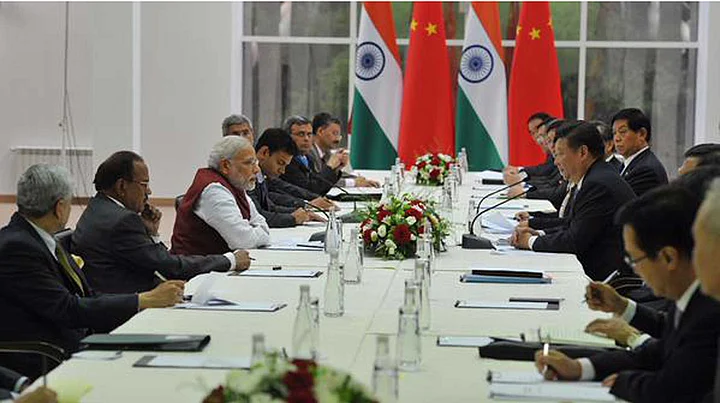‘Bipolar’ dilemma for India
- India will have to make a judicious move in choosing between the Shanghai Cooperation Organisation (SCO) and the TPP
- SCO offers India a platform to resolve its territorial disputes, may also aid in dealing with the threat terrorism poses
- From opposing India’s membership bid initially, China’s stand has softened with respect to the SCO owing to Modi-Jinping camaraderie
- Trans-Pacific partnership will provide with a platform that offers market access, technology and investment opportunities
- SCO promises more concrete gains than the TPP which looks like a mirage as of now
India’s diplomatic skills will be tested once again in balancing multilateral organisations like the BRICS and the Shanghai Cooperation Organisation (SCO) with that of the positive signals from the United States.
At the Ufa Summit meeting of multilateral organisations such as Shanghai Cooperation Organization (SCO) and the Brazil-Russia-India-China-South Africa (BRICS) on July 9-10, India is likely to join the former as a full-fledged member, with consensus emerging recently on this issue.
At the February meeting of foreign ministers of the trilateral of Russia-India-China, the joint statement alluded to such a prospect, although India evinced interest in joining the institution formally over a decade ago. India noted that the SCO, in its nearly two-decade existence, has exhibited tremendous interest in resolving territorial disputes. SCO may also aid in dealing with non-traditional challenges like terrorism, drug-trafficking, energy security and the like.
India was denied membership to SCO on various grounds earlier, most of them being technical hurdles. It seemed as if India was reportedly blocked by China which preferred Pakistan as a potential member, while India was backed by Russia. China’s position appears to be softening with personal rapport emerging between Prime Minister Narendra Modi and President Xi Jinping in the last one year since Xi’s visit to India in September 2014 and Modi to China in May 2015, as well as the larger emerging soft contest between the United States and China.
Russia also has been facing tremendous pressure from the United States and European Union over the Ukrainian developments with implications to its energy exports and economy in the context of western sanctions. That explains to an extent Russia lending out a helping hand to India to join the Shanghai Cooperation Organisation group.
For India, the BRICS formation offers an opportunity to give a boost to its infrastructure projects. After all, India had helped form the New Development Bank of the BRICS which is set to formally take-off this year.
Not favorable for developing countries?
However, the SCO grouping lacks significant economic imprint so far, except in the energy field. Its non-energy trade and investments figures between member states and observers is miniscule compared to their overall trade figures with dominant economies. While China had become an economic powerhouse, Russia had so far been reluctant to open the Eurasian space for Chinese entry except for a recent proposal on Eurasian economic cooperation. China had also proposed the revival of the Silk Road to connect distant lands of Europe, Asia and Africa – including through Central Asia and Russia.
On the other hand, the proposal for Trans-Pacific Partnership (TPP) arrangement of the United States offers a high-grade trade liberalisation, market access, technology and investment opportunities for the contracted member states.
TPP aspirant states need to first break state/public monopolies, subsidies and usher into free market principles, in addition to environmental and child labour norms. Very few have joined this initiative even as other ideas such as the south-east Asian RCEP (Regional Comprehensive Economic Partnership) or the APEC free trade are gaining traction.
Concrete Gains
The United States had also proposed the New Silk Road to provide land-locked Central Asian states alternate market access for their energy resources. While this project has not materialised so far, India’s commitments to the Chabahaar port in Iran and the road and railway projects in Afghanistan could trigger further interest in opening up this region.
The above suggest that the SCO membership could provide some concrete gains to India in the non-traditional security issues like energy resources, although this issue is mainly pursued through bilateral arrangements.
Also, in the light of the double-standards exhibited by China on counter-terrorism issues related recently to India and Pakistan, the SCO’s “peace mission” counter-terrorism exercises may lose some relevance for India. On the other hand, the TPP idea remains futuristic.
Thus the SCO and the TPP offer specific, but varied, advantages to India and hence it has to make a judicious move in working with both these major initiatives.
(The writer is Professor in Chinese Studies at Jawaharlal Nehru University, New Delhi)
(At The Quint, we question everything. Play an active role in shaping our journalism by becoming a member today.)
